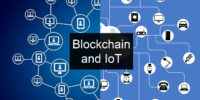Why Iot Is Shaping the Future of Healthcare Delivery

Are you curious about how IoT is revolutionizing healthcare delivery? Look no further!
In this article, we will explore the vital role IoT plays in transforming the future of healthcare.
Discover the numerous advantages it brings to the table, from improved patient care to enhanced efficiency.
We will also delve into various applications of IoT in healthcare delivery and tackle the challenges faced in implementing this technology.
Get ready to learn about the exciting future trends in IoT-enabled healthcare delivery!
Key Takeaways
- IoT revolutionizes patient monitoring and care through remote patient monitoring and smart wearable devices.
- Real-time data collection and transmission enable early detection of health issues and timely interventions.
- IoT enables improved patient outcomes through accurate diagnoses, personalized treatment, and medication adherence tracking.
- The future of IoT-enabled healthcare delivery includes the use of wearable devices, integration of telemedicine, and increased access to care through telemedicine and IoT.
The Role of IoT in Healthcare Delivery
You may be wondering how IoT is playing a role in healthcare delivery. Well, let me tell you, it’s revolutionizing the way patients are monitored and cared for.
With the help of remote patient monitoring and smart wearable devices, healthcare providers can now keep a closer eye on their patients, even from a distance. These devices collect vital data, such as heart rate, blood pressure, and oxygen levels, and transmit it to healthcare professionals in real-time. This allows for early detection of potential health issues, enabling timely interventions and preventing serious complications.
Moreover, patients can also actively participate in their own care by receiving personalized health recommendations and reminders. IoT is truly transforming healthcare delivery by promoting proactive and patient-centered approaches, ultimately leading to better outcomes and improved quality of life.
Advantages of IoT in Healthcare
The advantages of IoT in healthcare include improved patient monitoring and enhanced data analysis capabilities. With remote monitoring enabled by IoT, healthcare providers can closely monitor patients’ vital signs and other health parameters from a distance. This not only improves patient outcomes but also allows for early intervention in case of any abnormalities.
IoT devices can collect and transmit real-time data, providing healthcare professionals with valuable insights into a patient’s condition. These devices can also be used to track medication adherence, ensuring that patients are following their prescribed treatment plans.
Additionally, IoT in healthcare enables enhanced data analysis capabilities, allowing healthcare providers to identify patterns and trends in large datasets. This can lead to more accurate diagnoses, personalized treatment plans, and ultimately, better patient outcomes.
IoT Applications in Healthcare Delivery
IoT applications are revolutionizing healthcare delivery by enabling remote monitoring and real-time data analysis.
With real-time monitoring, healthcare providers can track vital signs and other important health data of patients from a distance. This allows for timely interventions and personalized care, even when patients are not physically present in a healthcare facility.
Remote patient monitoring, made possible by IoT, allows healthcare professionals to remotely monitor patients with chronic conditions or those recovering from surgeries, reducing the need for frequent hospital visits.
By collecting and analyzing data in real-time, healthcare providers can identify trends, detect abnormalities, and make informed decisions promptly.
IoT applications are transforming healthcare delivery by bringing convenience, efficiency, and improved patient outcomes through real-time monitoring and remote patient monitoring.
Challenges and Solutions for Implementing IoT in Healthcare
Implementing IoT in healthcare poses various challenges. Some of these challenges include ensuring data security and privacy, addressing interoperability issues, and integrating IoT devices into existing healthcare systems. Here are some key points to help you understand these challenges better:
- Data Security:
Protecting patient data from unauthorized access or breaches is crucial. It is essential to implement robust encryption methods and access controls to ensure data security. - Interoperability Challenges:
Integrating different IoT devices and platforms can be complex due to compatibility issues. To address this, developing standardized protocols and frameworks can facilitate seamless communication between devices.
Overall, ensuring data security and addressing interoperability challenges are vital for the successful implementation of IoT in healthcare. By incorporating robust security measures and promoting interoperability standards, healthcare organizations can leverage IoT’s potential while safeguarding patient information and improving healthcare delivery.
Future Trends in IoT-enabled Healthcare Delivery
To stay ahead in the rapidly evolving world of healthcare, you should keep an eye on the latest trends in leveraging IoT for improved patient care and streamlined processes.
One of the most prominent trends is the use of wearable devices. These devices, such as fitness trackers and smartwatches, can collect real-time data on a patient’s vital signs, activity levels, and sleep patterns. This information can be transmitted to healthcare providers, allowing for remote monitoring and early detection of potential health issues.
Another trend is the integration of telemedicine into IoT-enabled healthcare delivery. Telemedicine enables patients to consult with healthcare professionals remotely, saving time and increasing access to care. With the use of IoT, telemedicine can be enhanced by enabling real-time video consultations, remote diagnostics, and the sharing of medical records.
Frequently Asked Questions
How Does Iot Technology Ensure the Security and Privacy of Patient Data in Healthcare Delivery?
To ensure the security and privacy of patient data in healthcare delivery, IoT technology implements strong data protection and cybersecurity measures. These measures safeguard sensitive information and prevent unauthorized access, ensuring patient confidentiality and trust.
What Are the Potential Risks and Vulnerabilities Associated With Implementing Iot in Healthcare?
When implementing IoT in healthcare, you need to consider the potential risks and vulnerabilities. Cybersecurity concerns are paramount, as patient data must be protected. Legal and ethical implications also need to be addressed.
Can You Provide Examples of Successful Iot Applications in Healthcare Delivery?
Successful IoT applications in healthcare delivery include remote patient monitoring and smart medical devices. These technologies have improved patient outcomes by enabling continuous monitoring and more personalized care.
How Does Iot Technology Improve the Efficiency and Accuracy of Medication Management in Healthcare Settings?
IoT technology improves efficiency and accuracy of medication management in healthcare settings. With smart medication dispensing, you can ensure proper dosages, reduce errors, and ultimately improve patient outcomes.
What Are the Potential Barriers and Challenges in Adopting Iot Solutions for Remote Patient Monitoring in Healthcare Delivery?
Interoperability issues and data security concerns are potential barriers and challenges in adopting IoT solutions for remote patient monitoring in healthcare delivery.









